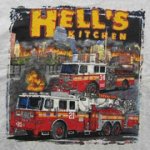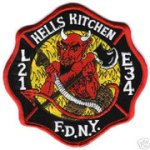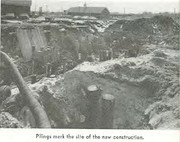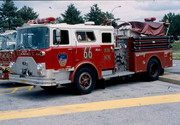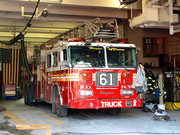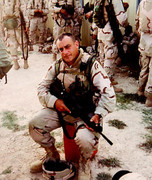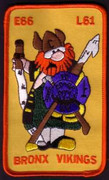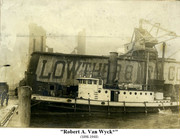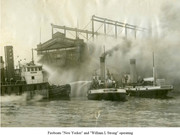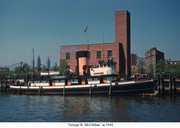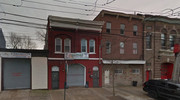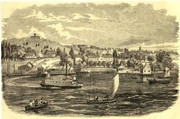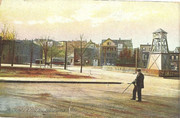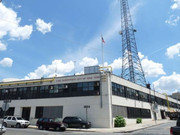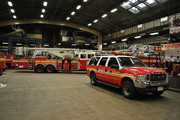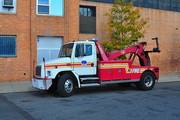Engine 34/Engine 34-2/Ladder 21/Ladder 21-2/Water Tower 3/Rescue 1/Engine 26 firehouse
440 W 38th Street Hell's Kitchen, Manhattan
Engine 34 organized 440 W 33rd Street former volunteer firehouse Mazeppa Hose 2 1865
Engine 34 moved 448 W 33rd Street 1879
Engine 34 moved 440 W 33rd Street 1880
Engine 34 moved 437 W 33rd Street 1906
Engine 34 moved new firehouse 440 W 38th Street 1937
Engine 34-2 organized 440 W 33rd Street at Engine 34 (organized from Engine 26-2) 1893
Engine 34-2 disbanded (to form Engine 26-2) 1894
Ladder 21 organized 432 W 36th Street 1890
Ladder 21 moved to 440 W 38th Street w/Engine 34 1937
Ladder 21-2 organized 432 W 36th Street at Ladder 21 1901
Ladder 21-2 moved 440 W 38th Street w/Engine 34 and Ladder 21 1937
Ladder 21-2 disbanded 1939
Water Tower 3 organized 432 W 36th Street at Ladder 21 1891
Water Tower 3 moved new firehouse 115 W 33rd Street w/Ladder 24 1901
Rescue 1 located at 440 W 38th Street at Engine 34/Ladder 21 1985-1989
(Rescue 1 relocated to Engine 34 after multiple alarm warehouse fire destroyed quarters)
Engine 26 located at 440 W 38th Street at Engine 34/Ladder 21 2001-2002
Note: Volunteer Mazeppa Hose Company 42 located at 440 W 33rd Street firehouse prior to organization of Engine 34
1865 evaluation: "Mazeppa hose, No. 42; Foreman, William Shields? Located 286 West Thirty-third street; performs duty in the first and second districts. House in bad condition ; carriage in good condition ; built in 1859, by Jos. Pine ; present number of men, 20; 200 feet of hose in good condition, 400 feet bad, and 400 feet ordinary. Also a four-wheeled tender, in ordinary condition." - the History Box.
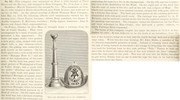
Engine 34:
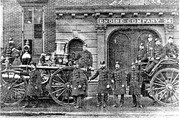
440 W 38th Street:
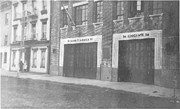
Note - both Ladder 21 and Ladder 21-2 were in-service in 1927 when new firehouse was built - reason for larger firehouse and door for trucks.
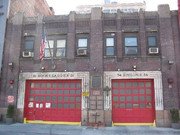
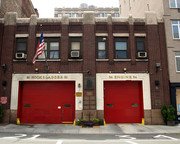
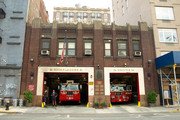
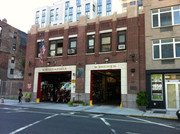
Engine 34:

E 34 1962 1000 GPM Mack:
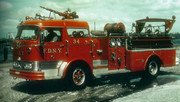
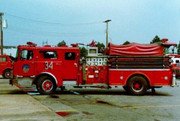
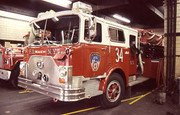
Engine 34 2001 ALF:

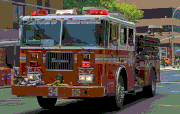
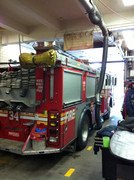
Ladder 21:
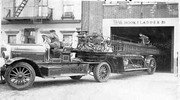

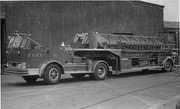
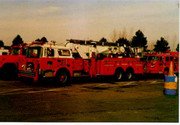
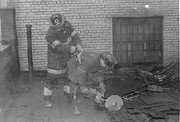
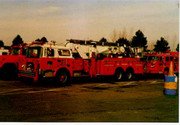
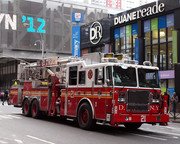
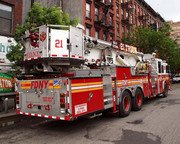
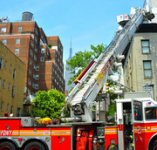
Rescue 1 at 440 W 38rd Street w/Engine 34 1980s:
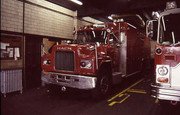
Engine 34 responding:
https://www.youtube.com/watch?v=HbPkOqJh9NE
Engine 34/Ladder 21 responding:
https://www.youtube.com/watch?v=JQNA5tcWvj8
Never forget:
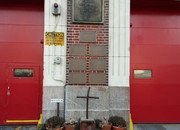
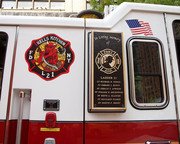
FF James F. Calnan, Engine 34, LODD December 25, 1897 killed when apparatus overturned responding to alarm 10th Avenue and 39th Street
Thomas R. Godfrey, Ladder 21, LODD May 23, 1892 thrown from rig while responding to alarm
Neighborhood - Hell's Kitchen: "The beginnings of... start in the mid-19th century, when immigrants from Ireland ...refugees from the Great Famine, began settling on the west side of Manhattan in shantytowns... After the Civil War the population increased dramatically, as tenements were erected and increased immigration added to the neighborhood's congestion. Many in this poverty stricken area turned to gang life and the neighborhood soon became known as the "most dangerous area on the American Continent"...the neighborhood was controlled by gangs...
The violence escalated during the 1920s, after Prohibition was implemented...warehouses in the district served as ideal breweries for the rumrunners...earlier gangs such as the Hell's Kitchen Gang were transformed into organized crime entities...After the Repeal of Prohibition, many of the organized crime elements moved into other rackets, such as illegal gambling and union shakedowns. The postwar era was characterized by a flourishing waterfront...By the end of the 1950s, however, the implementation of containerized shipping led to the decline of West Side piers...In addition, the construction of the Lincoln Tunnel devastated much of Hell's Kitchen south of 39th Street...
By 1965, Hell's Kitchen was home base of the Westies, a deeply violent Irish American crew aligned with the Gambino crime family. It was not until the 1980s that widespread gentrification began to alter the demographics of the longtime working-class Irish American neighborhood. The 1980s also saw an end to the Westies' reign of terror, when the gang lost all of its power after the RICO convictions of most of its principals...Today Hell's Kitchen is an increasingly upscale neighborhood of affluent young professionals, as well as residents from the 'old days'. It has also acquired a large diverse community as residents have moved north from Chelsea." from Wikipedia
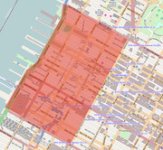
Unknown source of name "Hell's Kitchen". Possibly from:
1. a tenement on 54th
2. a building at 39th
3. a gang or local dive with similar name
4. a similar violent area of London
5. NJ residents who would see smoke rising from neighborhood
6. a corruption of Heil's Kitchen, a German lady who ran a restaurant near the docks
7. A veteran NYPD cop, Dutch Fred, on patrol with a rookie cop on West 39th St near 10th Ave. The two cops witnessed a small riot and the rookie said to Dutch, "This place is Hell itself," to which the veteran cop replied, "Hell's a mild climate. This is Hell's Kitchen, no less."
http://nyc-architecture.com/MID/MID-HellsKitchen.htm
http://forgotten-ny.com/2003/05/forgotten-tour-12-hells-kitchen-manhattan/
http://untappedcities.com/2012/10/12/gang-history-in-hells-kitchen/
